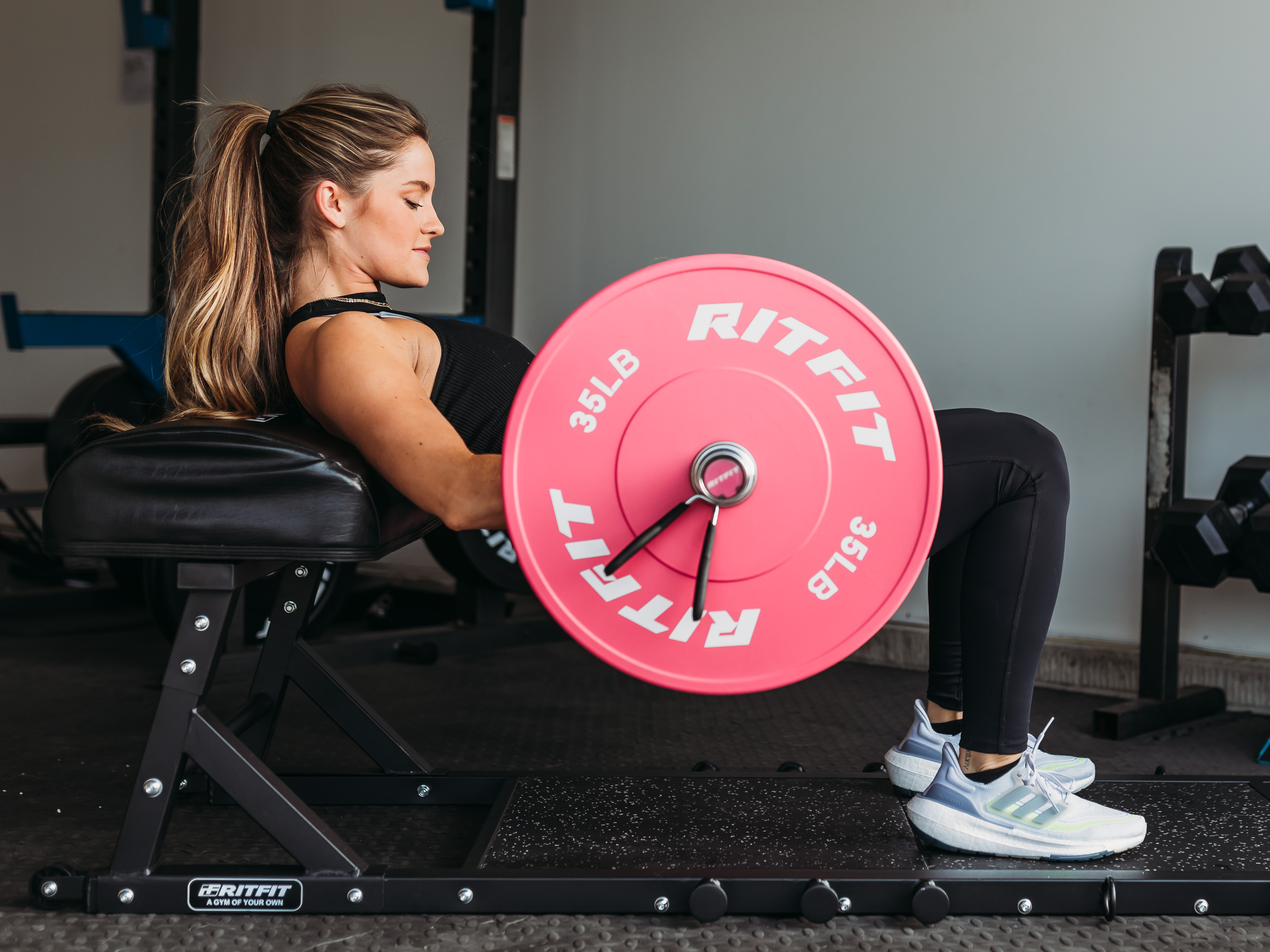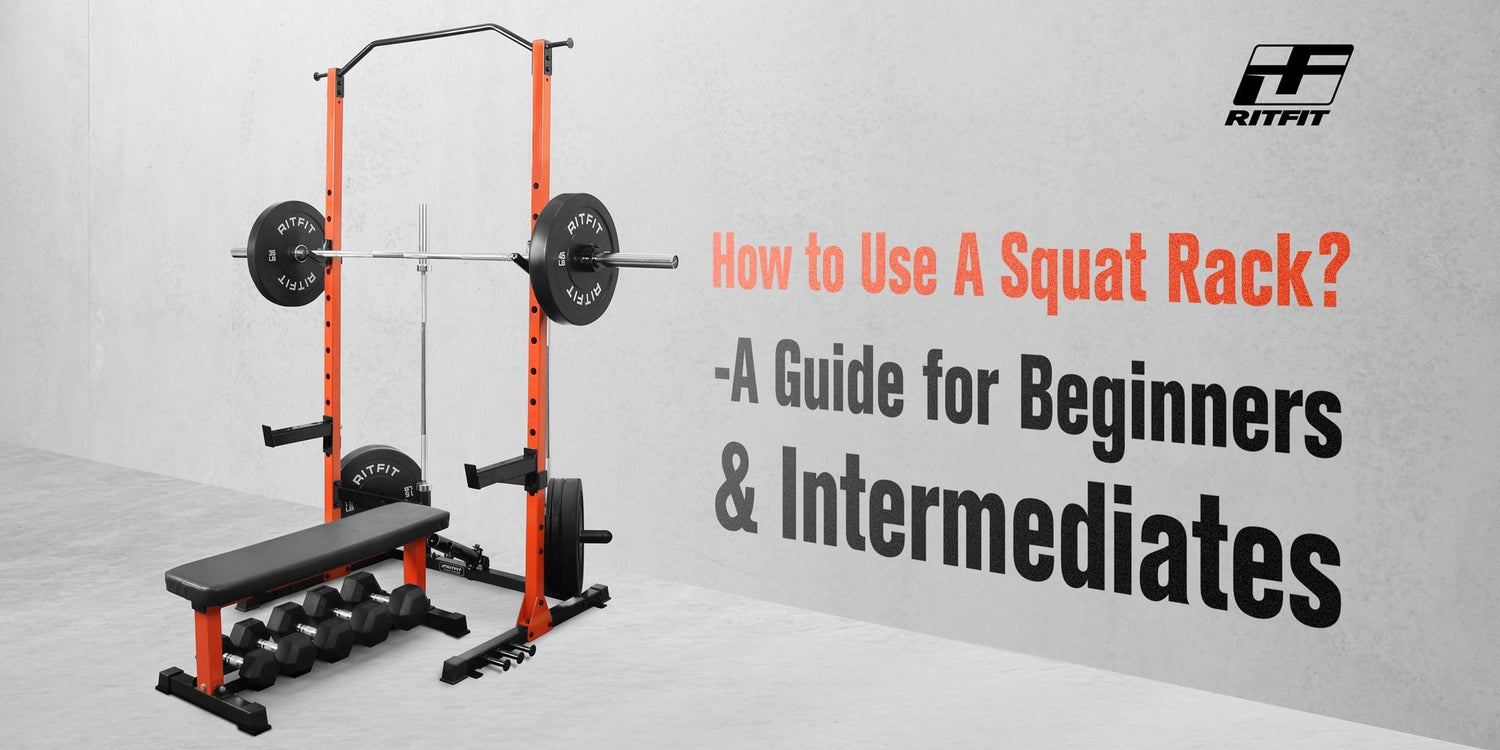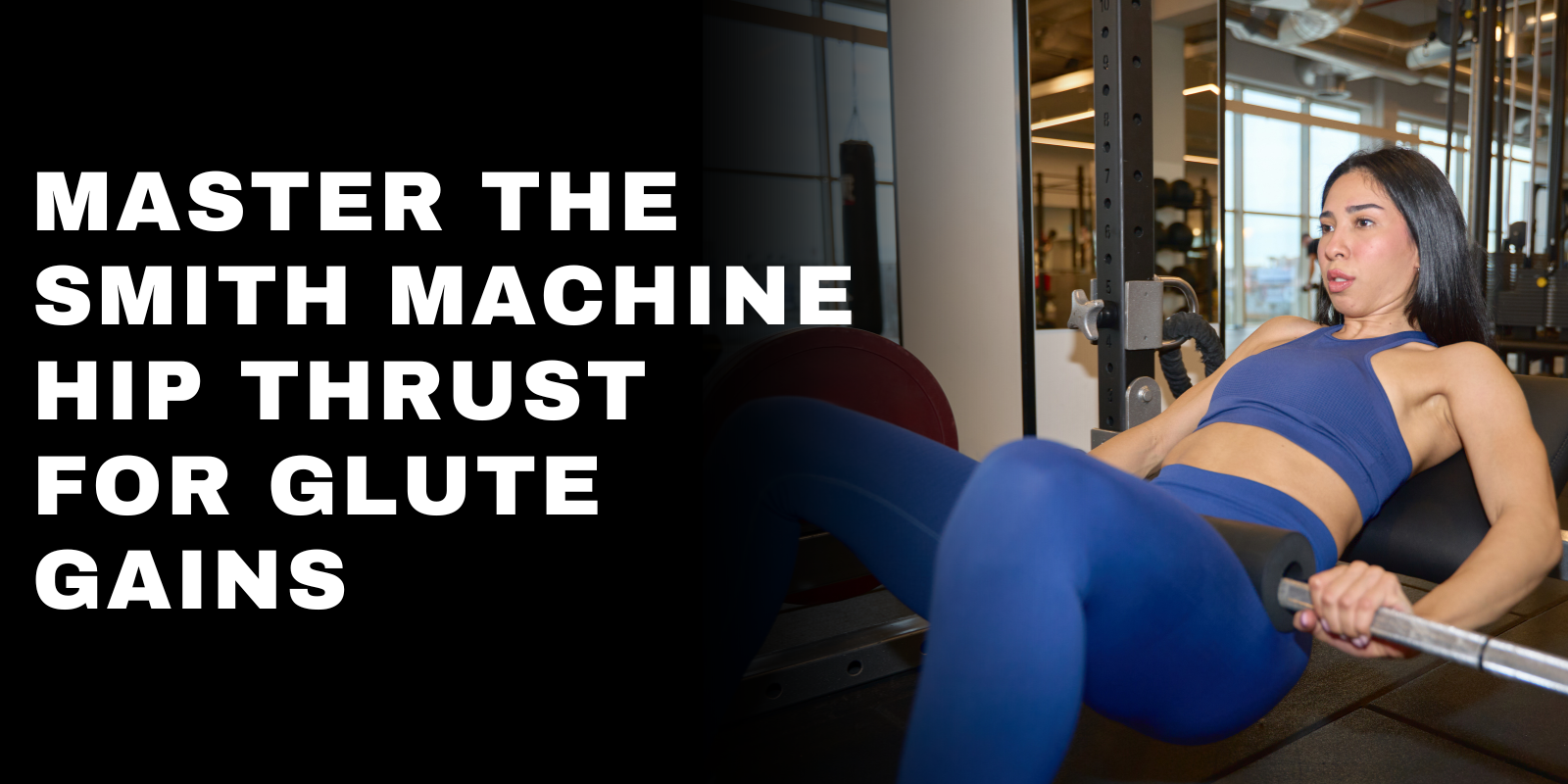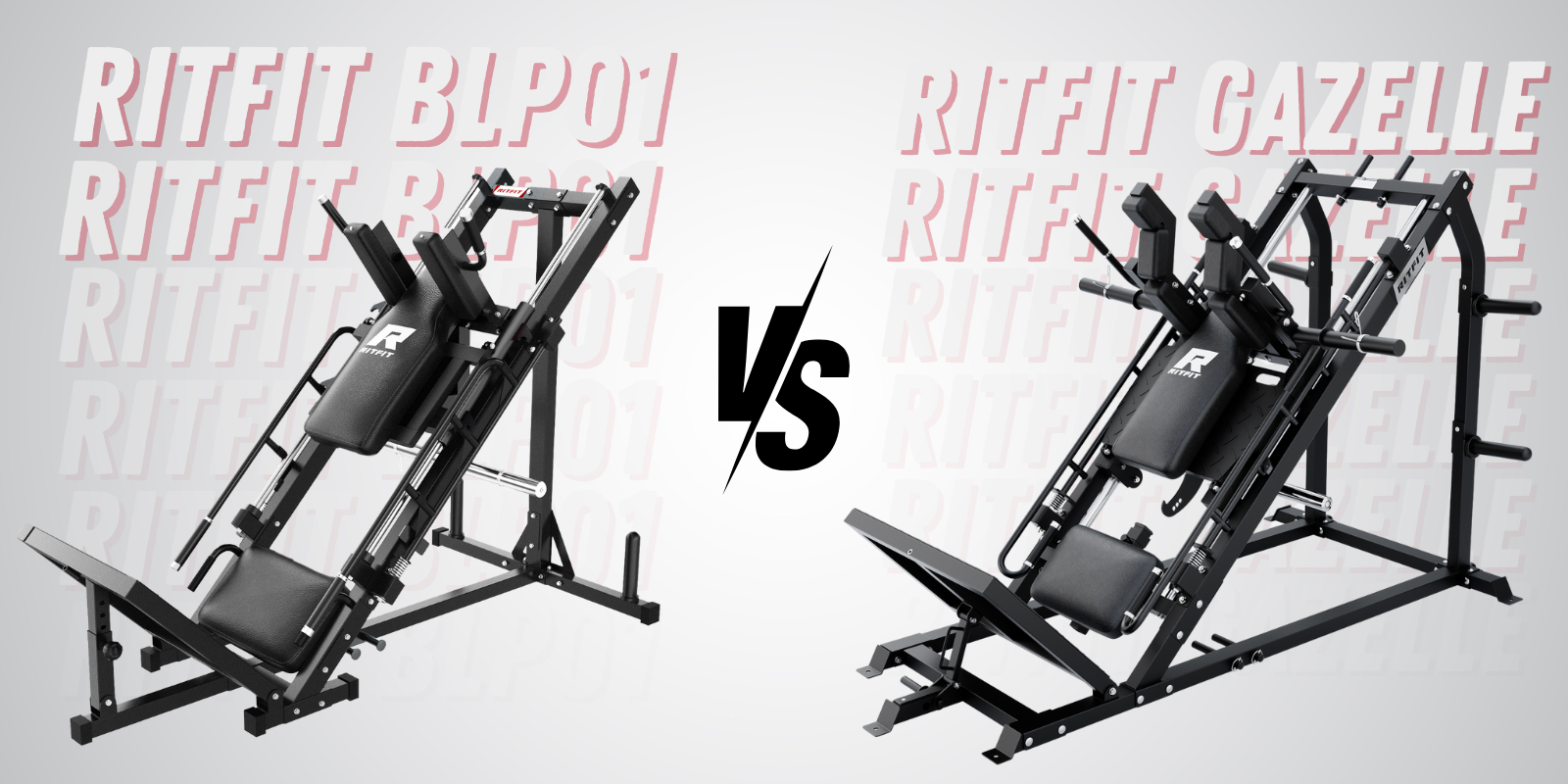Doing squats regularly is great for building muscle strength and losing weight. But to do squats with the proper technique, you need a squat rack. This way, you can incorporate squat exercises into your training regime safely.
But you may ask, how do I use a squat rack as a beginner or an intermediate? To answer this question, we will tell you how to use a squat rack and what are its dos and don'ts in this brief.
What Is a Squat Rack?
A squat rack is an exercise equipment designed to hold the weights and bars used for squatting exercises. It allows you to place the bar directly over your shoulders and lift it off the squat rack. This way, you don't have to bend over to lift the bar, cutting out a lot of unnecessary effort.
This also helps you maintain a good angle and technique during the exercise as you start out in a comfortable position. Additionally, squat racks are much safer since you can put the bar back without having to place your arms at weird angles.
Squat racks in big gyms tend to be very bulky and large. But for at-home squat exercises, you need a more compact option like the RitFit U-210.
How to Set up a Squat Rack?
Setting up a squat rack is pretty easy with the right tools. Here are the steps you can follow to set up your squat rack in minutes.
1. Attach the bottom cross beam to the bottom base frame using the nuts and bolts you got with the squat rack.
2. Attach the upright frames to the bottom base on both sides. You can do this using hex bolts and square neck bolts.
3. Now that the main frame is assembled, you can attach the pull-up bar to it for added strength.
4. Once done, you need to attach the barbell storage frame to the main frame. The square neck bolts will be used for attaching the barbell storage frame to the bottom base frame. The upright frames will be connected to the barbell storage frame using hex bolts.
5. Insert the plate storage tubes on both sides.
6. Install the landmine apparatus to the bottom base frame.
7. Install the resistance band pegs on the bottom base frame.
8. Finally, you can now insert the J bars and safety hooks on both sides to finish the assembly process.
How to Adjust Squat Rack Height?
The upright frames of squat racks have multiple slots or holes in them where J bars and safety hooks go. You can adjust the height of the squat rack by inserting the J bars and safety hooks in a higher or lower slot. It is best to keep the bar height at around your chest level, just below your shoulders. This way, you can easily lift up the bar and set it down without having to bend down for squats.
Squatting Safely Tips When Using a Squat Rack
There are some precautions you need to take when using a squat rack. This is because you will be lifting pretty heavy weights. Without proper precautions, you could end up hurting yourself. So here are some safety tips for using a squat rack you should always follow:
Double Check the Load
It may sound obvious, but you should always double-check the load you are using on the squat bar. Make sure that the weight is equal on both ends so no imbalance is created as you do squats. Also, ensure that the weight is inserted properly so there is no risk of it falling off mid-squat.
Your squat rack also has a maximum weight limit that it can carry. You should never put more weight on the squat rack than its maximum capacity. Otherwise, it can collapse and cause injury.
Clear Out Your Surroundings
Make sure that there are no hurdles around your squat rack that could get in the way as you exercise. Additionally, there should be enough room around you to step back a foot or two from the squat rack and still be able to do squats.
Otherwise, you will have to do squats closer to the squat rack, which could get in your way. You could lose balance if the bar comes in contact with the squat rack.
Ask For Help
It is never a bad idea to have someone help you with your exercise. Ask someone to be your spotter as you exercise so they can help you lift up the bar in case you fail a squat. This is especially helpful if you are switching to a heavier weight, as the added weight could end up being too much for you. A spotter can intervene in such a case to help you out.
Mistakes to Avoid When Using a Squat Rack
When using a squat rack, there are some common mistakes you should avoid. These mistakes are:
Going Too Heavy
You should never try to squat with more weight than you can handle. Using too much weight can cause injury. If you do want to increase your squatting weight, it is best to do so in small increments.
This way, there isn’t a huge spike in load. Keep increasing the weight in small amounts until you get to a point you are the most comfortable with.
Rounding Your Lower Back
When squatting, you need to keep your back straight. If you lean forward too much, you could lose balance. Also, if your back is rounded, more strain is placed on your spine and muscles. This can be pretty dangerous. So it is ideal to keep your back straight throughout your squats to ensure your safety.
Not Engaging Your Core Muscles
Many people make the mistake of not engaging their core muscles when squatting. A squat is not all about legs. You also have to utilize your lower back and core muscles during the lift. This way, your body will stay much more stable during a squat.
Not Using Safety Accessories
It isn't a good idea to skimp out on safety accessories when using a squat rack since they can save you from some serious injuries. Safety accessories, such as spotter arms, safety pins, and safety straps, can catch the bar if you need to bail out on a squat. These accessories are especially necessary if you don't have a spotter present when you do squats.
Squat Rack Exercises You Can Do
You are not just limited to simple squats if you have a squat rack. There are many other types of exercises you can do using squat racks, thanks to their easy adjustability. Some of the exercises you can do using a squat rack are:
Deadlift in Squat Rack
Deadlifting becomes much easier if you use a squat rack. Adjust the rack so the bar is level with your mid-shins. Now place your feet in a stable position and wrap your hands around the bar at a shoulder-width position.
Use your glutes and engage your core to pull the bar up while thrusting your hip forward as the bar goes up. Keep the bar close to you and lower it down. Repeat the pulling up and lowering down motion to continue doing deadlifts.
Military Squat
To do a military squat, stand beneath the squat rack with your feet apart and your toes pointing forward. Rest the bar on top of your shoulders and lift it out of the rack in one swift push. Step back slightly but not so much that you are too far away from the safety hooks.
Now lower your hips towards the ground by bending your knees until you reach a 90° angle at the knees. You can then stand back up. Congratulations, you have finished a military squat.
Leg Workouts With Squat Rack
There are many leg workouts you can do with a squat rack. These workouts include rack glute hip thrusts, barbell calf raises, good mornings, sumo squats, and lunges. Doing various leg exercises will help you target and strengthen different parts of your legs.
Overhead Press Squat Rack
You can even do upper body workouts using a squat rack with ease. One such workout is the overhead press squat. Adjust the squat rack, so the bar is nearly touching your chest’s top area. Now grab the bar with your hands wider apart than your shoulder-width and press the bar overhead.
Lower the bar down to chest height again and lift it back up. Keep doing this until your set is done. Overhead press squat is ideal for strengthening your shoulders, abs, and back muscles.
Bench Press in Squat Rack
Squat racks are perfect for doing bench presses. Bring a bench to your squat rack and adjust the bar height till it is closer to your chest. You can now start doing bench presses to strengthen your chest and arm muscles.
Final Thoughts
Squat racks are a very versatile training tool. They are also very safe if they are set up correctly and proper safety accessories are used. However, be sure to avoid common mistakes, such as overloading, to prevent injuries. Squat racks can be a great addition to your home gym thanks to their easy adjustability and smaller size. Their affordability also means that you won't have to empty the bank just to stay fit.













